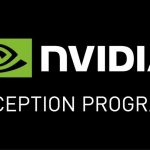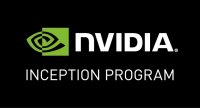Kia Talks Up Conversational Search
by Laurie Sullivan@lauriesullivan, December 8, 2016

Kia Motors America is betting big on conversational search to create a better consumer experience. The company recently launched click to text, which uses the Google AdWords ad extension — similar to call ad buttons — for sending SMS or text messages, and the chatbot Nirobot, which the company refers to as the newest member of its marketing team.
It’s a world where the search engine asks searchers questions rather than the other way around, said David Schoonover, senior manager and head of digital, social, CRM and .com atKia Motors America, told attendees Thursday during the opening keynote at the Search Insider Summit.
He told marketers to think of themselves as “experience designers,” because consumers are willing to pay more for similar products if they get an excellent experience.
Some of those experiences occur in search engines or on Web sites. People use about 10 or more keywords on average for each voice search vs. two for text, Schoonover said. He spoke about how voice search, natural language, and audience data came together in the past few years to change the customer experience, lengthening the query stream to make search more conversational.
NiroBot, KMA’s bot, launched in November with a goal to create awareness for a product not yet for sale. KMA used used third-party companies to build the chatbot and set up a maintenance program for the project. The group also is teaching the chatbot about every part of each owner’s manuals, so consumers can go online and ask the bot maintenance questions..
Standard APIs now allow the bot to work across multiple search interfaces and support a variety of consumer experiences. Schoonover made a point to differentiate the difference between the term “search interface” and “search engine.” Yelp and Williams-Sonoma have search interfaces that connect from search engines Google and Bing. “2017 will become the year of the AI-powered bot,” he said, adding that the company’s also working to integrate it into other platforms like Amazon Echo’s Alexa.
The idea to build a product that provides one-to-one conversations, similar to call centers, delivered 74,000 messages from about 4,000 unique users during the first week of launch. Paid social campaigns though Facebook helped to promote it on Messenger. Questions that the bot could not answer gets redirected to a live person in KMA’s live call center.
How will AI-powered bots impact search engines like Google and Bing? Schoonover said predictive algorithms will tie into ecommerce to provide consumers with the most productive online experiences.
KMA designed the bot to respond in the personality of the brand. It will not only respond with available car colors, but will provide information on questions like who won the U.S. prudential election or other random questions. “We designed [Nirobot] to take on the persona of the brand,” he said. Questions are about 75% product related, and the remainder human interest. “People are more loyal to personas and experiences, not just sheet metal.”
Chatbots are a direct way to get someone to know today’s product, which will influence the bottom line, Schoonover said. When KMA finds someone using a derogatory term in social media, company marketers know the person hasn’t touched the product in 10 years.
MediaPost.com: Search Marketing Daily
(30)












